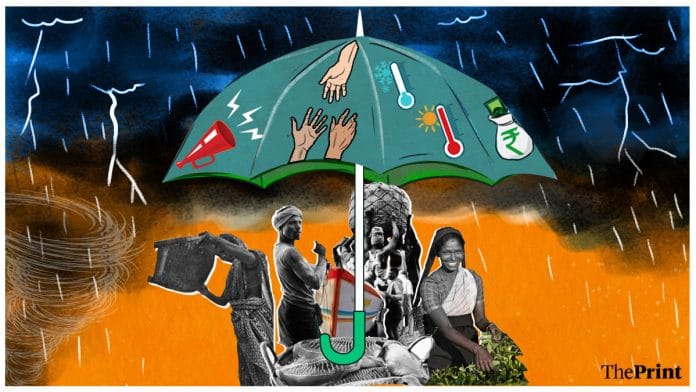It’s often said that climate change is the critical challenge of our time. As a sustainability professional I’d hardly disagree – little is more important to our future. But one thing I’d put on a par is addressing water insecurity. Indeed, they are interlinked issues, yet understanding of the connected nature of water and climate change is poor. BSI polled 9,300 people worldwide, and less than half (45%) said addressing water security was as important as addressing climate change. Not only that, but awareness was low; just one in six said it was common to hear politicians talk about this.
This is worrying, given how stark the facts are. We worked with Waterwise to assess water use in 41 countries, finding that almost a third performed worse on water security than in 2023, while 43% showed no change. The situation in Spain and Türkiye was particularly concerning, but the reality is this is an enormous challenge everywhere. It’s absolutely crucial that we build understanding of the scale of the problem and how we can tackle it. As a sustainability professional, I necessarily have a “can do” attitude, and I believe we can drive progress on water security – provided we have the collective will to do so.
Having lived in the Middle East, water security has long been front of mind. But I know it can be easy to think of water as plentiful, especially if you live somewhere that is not vulnerable to drought and receives regular rainfall. Yet while some areas are dryer than others, this affects every place. According to BSI’s new indicator, China, India and the US are facing the highest level of water security challenges, alongside relatively limited progress towards solutions. Ultimately, freshwater supplies are finite, meaning they are declining proportionate to population needs. From 1900 to 2024, annual water use rose by around 3,500 billion m3 globally – about the same as adding the requirement of an Olympic-sized pool (2,500 m3) every 2.79 seconds. That’s not getting any better soon: Global water demand is projected to grow by some 400 billion m3 annually.
When you’re talking about a future in which we could be adding demand equivalent to one Olympic-sized pool even faster, at every two seconds, there’s no time to waste. Media and policy-makers, along with businesses and other organizations, must shape an urgent conversation – starting by bridging the gap between the reality of the global water security challenge and public comprehension of the scale of the issue. It was striking that 74% claimed to be confident in their country’s freshwater supply, rising to 85% in India and 82% in Australia. Yet the same proportion specifically cited drought in their country as an issue. The numbers do not stack up. There is a concerning disconnect between the reality of the challenge, public understanding and the action required to turn things around.
Clearly, educating and informing people can help. A key first step is placing water within the climate conversation. The two impact each other in a feedback loop, with global water-cycle shifts and human water use amplifying the impacts of climate change, causing extreme weather events like drought and flooding, and exacerbating water scarcity. Equally, given how carbon-intensive the water industry is, wasting water is also wasting carbon. While the world is not there yet on climate change mitigation, there is growing engagement with decarbonization. We can capitalize on that to respond on water too. Placing water security as a key topic within the climate change conversation can help to raise awareness and understanding, and drive positive change.
Another important step is moving towards a solutions mindset and embracing practical strategies to address water insecurity. I think it’s positive that more than half of people (53%) believe it is important for individuals to take steps to reduce wastage. But as with net zero, individuals can’t move the dial alone – the opportunity is for business and policy-makers to collaborate on offering consumers the tools to make sustainable purchasing decisions. This could be as simple as reducing leakage with smart meters, as is happening in the UK, or embracing hydroponic agriculture to transform how food is produced. In Thailand, carpet-maker Siam Nitori uses a dyeing process that eliminates water consumption. Australia and Singapore have implemented mandatory product water efficiency labelling systems, visible at the point of sale. And in San Francisco, Water Reuse Requirements have been embedded in building standards.
Individually, these examples might not seem huge, but what they can do is empower people to act, put water efficiency at the forefront of consumer consciousness, and encourage the market to innovate further to enable sustainable choices. When 73% globally say they would support water use labels on products, we’ve got to give people the actionable solutions they are crying out for.
As I said earlier, I believe we have the power. There are pockets of progress towards a water-secure world. Clearly, however, there is more to do to promote understanding and positive change. This begins with recognition of the scale of the challenge, and how it fits into broader sustainability conversations. From there, our politicians and leaders can pave the way for action.
There is no silver bullet, but solutions are there for the taking; there is much we, as individuals, organizations and society, can achieve collectively. We can drive progress toward a sustainable future, where the supply of fresh water meets growing demand. We have the tools at our disposal to start to address water insecurity – now let’s gather the will to do so.
This article previously appeared in the World Economic Forum.






